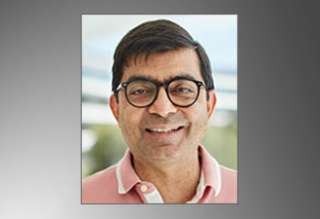Synthetic Aperture Technical Working Group
Top Reasons to Join SPS Today!
1. IEEE Signal Processing Magazine
2. Signal Processing Digital Library*
3. Inside Signal Processing Newsletter
4. SPS Resource Center
5. Career advancement & recognition
6. Discounts on conferences and publications
7. Professional networking
8. Communities for students, young professionals, and women
9. Volunteer opportunities
10. Coming soon! PDH/CEU credits
Click here to learn more.
Primary Technical Committee:
Sensor Array and Multichannel Technical Committee
Other Relevant Technical Committees:
Machine Learning for Signal Processing
Computational Imaging
Signal Processing for Communications and Networking
Background and Overview
Over the course of several decades, a diverse range of imaging sensors has been utilized to generate a unified synthetic image, simulating a sensor with a wider aperture and shallow depth-of-field. This technique, known as synthetic aperture (SA) processing, has revolutionized various fields, including radar, sonar, radio telescopes, channel sounding, optics, radiometry, acoustics, quantum, microscopy, and biomedical applications such as ultrasound, magnetic resonance imaging (MRI), magnetometry, and computed tomography (CT). Compared to physical hardware apertures with equivalent angular resolution, SAs offer cost, hardware, and power savings, along with improved visibility of occluded objects, enhanced signal-to-noise ratio (SNR), and heightened resolution. SAs can be constructed through sensor/object motion or by deploying sensors in a distributed manner. Initially developed for radar systems in the 1950s, SAs were first implemented using digital computers in the late 1970s. Subsequently, more advanced techniques emerged in the late 1980s, leading to widespread adoption across various applications throughout the 1990s.
In recent years, significant advancements have been made in the use of SAs for measuring the characteristics of propagating electromagnetic radiation in wireless communication environments. Here, SAs are created by precisely moving a receive antenna along predetermined points on a spatial sampling lattice using a mechanical positioner like a robot arm. By capturing the signal amplitude and phase at each spatial location, it becomes possible to reconstruct important parameters of the scattered electromagnetic waves, including power, directions of arrival, delays, and polarization. In quantum SA applications, Rydberg sensors are garnering significant interest for wideband receivers. In SA sonar (SAS), existing algorithms are being adapted for widebeam and wideband systems to discern new properties of sea-bottom scattering. In optics, coded diffraction patterns are now used to acquire several snapshots of the scene by changing the spatial configuration.
The overarching objective of the SA Technical Working Group (SA-TWG) is to support the maturation of the theoretical framework and empirical techniques underlying the estimation of wave parameters using SAs in different media. The TWG's activities encompass experiments, data analyses, and parameter estimation algorithms. Equally important is the theoretical aspect of the TWG's work, which focuses on developing original and computationally efficient techniques. The TWG also aims to explore and identify new potential applications for SAs that arise from precise measurement and estimation of environmental parameters. This includes applications in areas like channel emulators for testing wireless device performance.
The tangible outcomes of the TWG's efforts encompass a range of valuable contributions to the field. These include:
- development and validation of SA best practices documented in IEEE standards,
- the establishment of a shared repository for data, code, and resources,
- working papers summarizing the TWG's analyses and experiments,
- joint publications in IEEE conferences or journals,
- organizing summer schools to facilitate SA education and joint PhD training efforts,
- challenges or competitions promoting the adoption of SAs in engineering education and job training,
- webinars and resources for the IEEE Resource Center/SigPort,
- collaboration on research proposals for government funding,
- engagement with IEEE Future Directions Initiatives,
- community building through websites, blogs, and social media activities,
- collaborations between academia, industry, and government research labs,
- special sessions and tutorials at relevant conferences,
- special journal issues dedicated to SAs, and
- the introduction of new EDICS categories to enhance classification and organization within the field.
By leveraging the collective expertise and documenting state-of-the-art metrology practices and methods, the TWG aims to provide valuable resources that can support product development, internal research, and optimization of budget allocation strategies for institutions working with SAs. The TWG's insights and lessons learned will be particularly valuable for smaller companies and institutions with limited resources, helping them navigate the pursuit of new technologies more effectively.
SPS on Twitter
- DEADLINE EXTENDED: The 2023 IEEE International Workshop on Machine Learning for Signal Processing is now accepting… https://t.co/NLH2u19a3y
- ONE MONTH OUT! We are celebrating the inaugural SPS Day on 2 June, honoring the date the Society was established in… https://t.co/V6Z3wKGK1O
- The new SPS Scholarship Program welcomes applications from students interested in pursuing signal processing educat… https://t.co/0aYPMDSWDj
- CALL FOR PAPERS: The IEEE Journal of Selected Topics in Signal Processing is now seeking submissions for a Special… https://t.co/NPCGrSjQbh
- Test your knowledge of signal processing history with our April trivia! Our 75th anniversary celebration continues:… https://t.co/4xal7voFER





